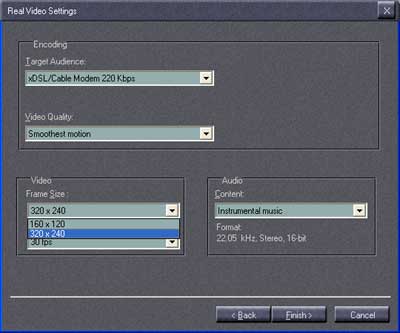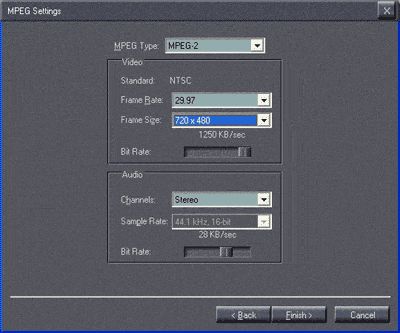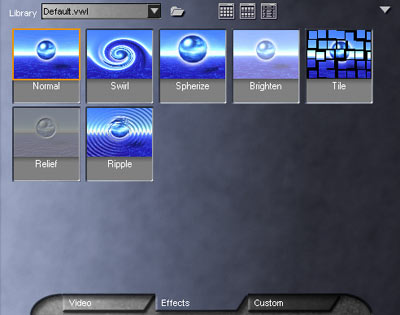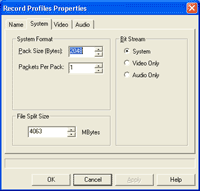ATI's Best: All-in-Wonder Radeon 8500 128MB & TV/Capture Card Roundup
by Anand Lal Shimpi on April 22, 2002 10:40 PM EST- Posted in
- GPUs
Time shifting works fine and quite intuitively, you simply hit a time shifting button and the software begins recording. Unfortunately there is a 10 second delay between when you click the time shifting button and when it actually begins which can be a bit annoying. When time shifting using WinDVR at 320 x 240 with MPEG-2 encoding (224 Kbit/second stream) the CPU utilization on our Athlon XP 1900+ ranged between 30 - 40%. Moving up to 640 x 480 (6817 Kbit/second stream) proved to max out our CPU utilization at 100% meaning that the Personal Cinema is very dependent on a high speed CPU for time shifting. Basic recording required 20% and 55% of our CPU utilization in the respective two cases. While time shifting you can use a skip commercial feature to fast forward through a user definable amount of time (the default is 30 seconds).
For regular channel surfing the tuner is considerably slower than the Matrox Marvel G450 eTV. In fact, it was actually the slowest out of the bunch to the point where it was a tad annoying although we got used to it.
While InterVideo covers the PVR features of the Personal Cinema, it's MGI's VideoWave4 SE is bundled to handle video capturing/editing.

VideoWave4 SE is much easier to use than Matrox's Ulead VideoStudio 4 SE and has the ability to output to .WMA (Windows Media) and .RM (Real Media) formats.

The same resolutions offered for the MPEG-2 encoding under WinDVR are present for exporting to MPEG-2 under VideoWave4 SE. You unfortunately can't configure the particulars of WMA output which limits the usefulness of that encoding option. Overall it's an excellent package for something that's bundled with a card and ends up working a lot better than the Ulead software bundled with both the ATI and Matrox cards.


Some of the effects options, you can see they are very easy to select and use
Overall the Personal Cinema is a great first attempt for NVIDIA however it has a number of shortcomings brought on by the fact that its software wasn't developed in-house specifically for NVIDIA. The actual capture/tuner quality is pretty decent but remember you are dealing with purely analog signals so there is a lot of room for quality loss. The only way to avoid this is by capturing from a digital source such as using Firewire to capture from a DV camera.















2 Comments
View All Comments
louisarthur - Monday, July 25, 2022 - link
nice